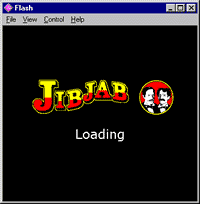Parent class: VirWare
Viruses and worms are malicious programs that self-replicate on computers or via computer networks without the user being aware; each subsequent copy of such malicious programs is also able to self-replicate. Malicious programs which spread via networks or infect remote machines when commanded to do so by the “owner” (e.g. Backdoors) or programs that create multiple copies that are unable to self-replicate are not part of the Viruses and Worms subclass. The main characteristic used to determine whether or not a program is classified as a separate behaviour within the Viruses and Worms subclass is how the program propagates (i.e. how the malicious program spreads copies of itself via local or network resources.) Most known worms are spread as files sent as email attachments, via a link to a web or FTP resource, via a link sent in an ICQ or IRC message, via P2P file sharing networks etc. Some worms spread as network packets; these directly penetrate the computer memory, and the worm code is then activated. Worms use the following techniques to penetrate remote computers and launch copies of themselves: social engineering (for example, an email message suggesting the user opens an attached file), exploiting network configuration errors (such as copying to a fully accessible disk), and exploiting loopholes in operating system and application security. Viruses can be divided in accordance with the method used to infect a computer:- file viruses
- boot sector viruses
- macro viruses
- script viruses
Class: Email-Worm
Email-Worms spread via email. The worm sends a copy of itself as an attachment to an email message or a link to its file on a network resource (e.g. a URL to an infected file on a compromised website or a hacker-owned website). In the first case, the worm code activates when the infected attachment is opened (launched). In the second case, the code is activated when the link to the infected file is opened. In both case, the result is the same: the worm code is activated. Email-Worms use a range of methods to send infected emails. The most common are: using a direct connection to a SMTP server using the email directory built into the worm’s code using MS Outlook services using Windows MAPI functions. Email-Worms use a number of different sources to find email addresses to which infected emails will be sent: the address book in MS Outlook a WAB address database .txt files stored on the hard drive: the worm can identify which strings in text files are email addresses emails in the inbox (some Email-Worms even “reply” to emails found in the inbox) Many Email-Worms use more than one of the sources listed above. There are also other sources of email addresses, such as address books associated with web-based email services.Read more
Platform: Win32
Win32 is an API on Windows NT-based operating systems (Windows XP, Windows 7, etc.) that supports execution of 32-bit applications. One of the most widespread programming platforms in the world.Description
Technical Details
This is an Internet worm spreading via e-mail by sending infected messages from infected computers. While spreading, the worm uses MS Outlook, and sends itself to all addresses that are stored in the MS Outlook Address Book. The worm itself is a Win32 application about 70K in length, written in VisualBasic.
When run (if a user clicks on an attached infected file), the worm sends its copies by e-mail, and performs the following destructive action: the worm deletes all .INI, .LOG, .DLL, .EXE, .COM, .BMP in Windows directory and .INI, .LOG, .DLL, .EXE, .BMP in Windows system directory.
The worm does not installs itself into the system and does not touch system registry (i.e. does not registers itself in there). This is "direct action" worm that performs its action only once being activated from infected message. The worm copies itself to Windows TEMP directory, but does not use that copy.
When run, the worm displays a fake window with a "Macromedia Flash Player" picture in it, and it displays a "Loading", "Loading...", "Loading..." message in an endless loop.

The menus in the window do not summon any action when they are selected, except the "Help" menu. Upon selecting it, the "About Macromedia Flash Player 5..." item appears, when that item is selected, the worm displays the message box:
Flash
You're are now FUCKED! (C) 2001 by BGK (Bill Gates Killer)
[ OK ]
The worm sends itself as an e-mail message with an attached EXE file that is the worm itself. The message consists of:
Attached file name: NakedWife.exe
The Subject: Fw: Naked Wife
Message body:
My wife never look like that! ;-)
Best Regards,
[CurrentUser]
where [CurrentUser] is the name of the sender.
Being activated by a user (by double clicking on an attached file), the worm opens MS Outlook, gains access to the Address Book, obtains all addresses from there and sends messages with its attached copy to all of them. The message subject, body and attached file name are the same as above.
Read more
Find out the statistics of the vulnerabilities spreading in your region on statistics.securelist.com